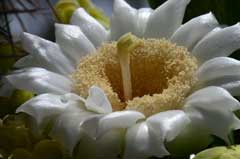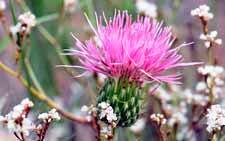Opuntia santa-rita, Santa Rita Pricklypear
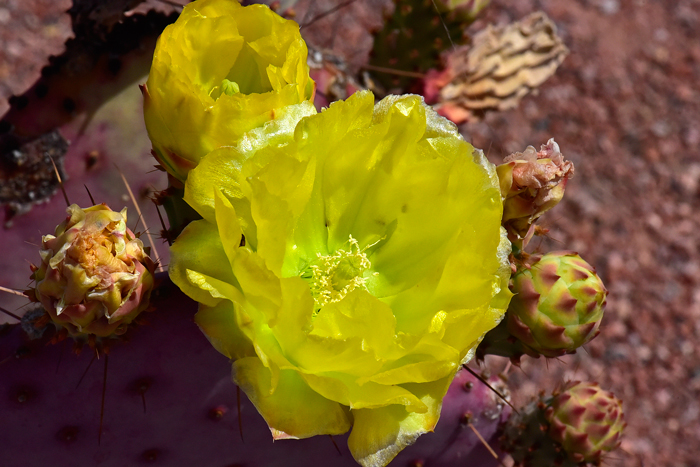
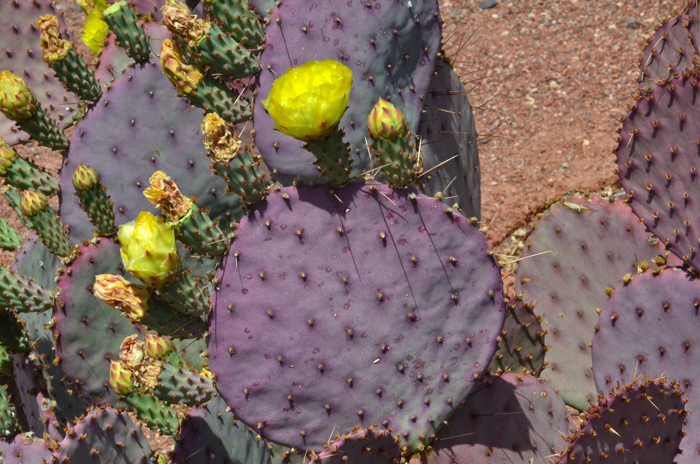
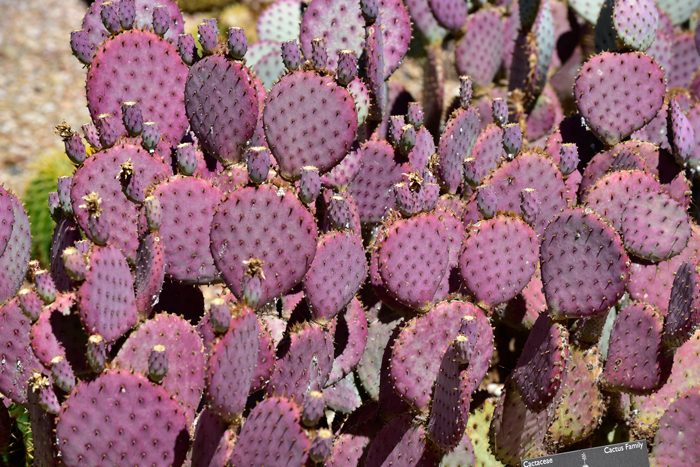
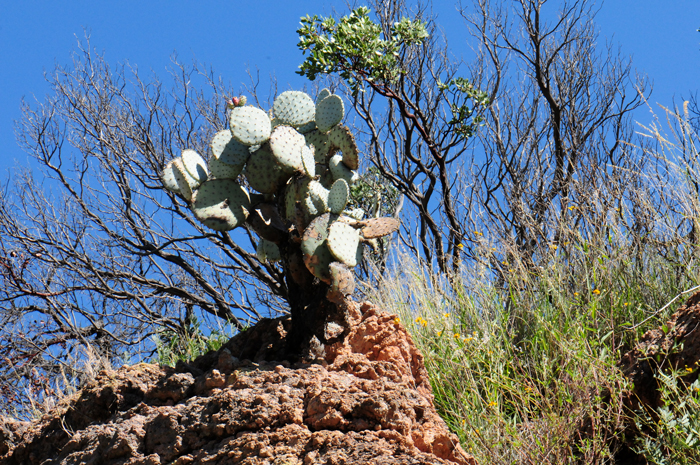
Scientific Name: Opuntia santa-rita
Common Name: Santa Rita Pricklypear
Also Called: Santa Rita Prickly Pear (Spanish: Duraznilla, Nopal Morado)
Family: Cactaceae, Cactus Family
Synonyms: (Opuntia chlorotica var. santa-rita, Opuntia violacea var. santa-rita)
Status: Native
Duration: Perennial
Size: Up to 6 feet or so, usually much less.
Growth Form: Shrub (sprawling) or tree with short trunk; erect; pads flattened, violet or lavender to red-purple with purple areas around areoles and pad margins; ovate or obovate sometimes wider than long.
Leaves: Leaves modified into spines or glochids and emerging from areoles; spines 0 to 2 per areole, usually few, if any along margins of stem segments (pads), deflexed to erect, pale yellow aging reddish brown, glochids dense in crescent, yellow to tan, aging brown.
Flower Color: Yellow, inner tepals yellow throughout, fading orangish, flowers are found along upper margins of pads; filaments pale yellow or white distally; anthers pale yellow and style lobes light green; fruit purplish, green inside, obovoid to barrel shaped, fleshy, glabrous, spine-less.
Flowering Season: April to June.
Elevation: 2,500 to 5,500 feet.
Habitat Preferences: Sandy to rocky soils, flats, slopes, variable habitats; deserts, plains, canyons, grasslands, oak woodland edges.
Recorded Range: In the United States Opuntia santa-rita is found in Arizona, New Mexico and TX. In Arizona it is found in the central and southern part of the state.
North America & US County Distribution Map for Opuntia santa-rita.
U.S. Weed Information: No information available.
Invasive/Noxious Weed Information: No information available.
Wetland Indicator: No information available.
Threatened/Endangered Information: Arizona: Opuntia santa-rita, Santa Rita Pricklypear is salvage restricted.
Genus Information: In North America there are 52 species for Opuntia. Worldwide, The Plant List includes 194 accepted species names and a further 203 scientific names of infraspecific rank for the genus.
In the Southwestern United States: Arizona has 16 species of Opuntia, California and Utah each have 10 species, Nevada has 6 species, New Mexico has 13 species, Texas has 23 species. All data is approximate and subject to taxonomic changes.
Comments: Santa Rita Pricklypear is an attractive cactus with bright yellow showy flowers and violet or purple pads or joints. This species is often used in desert landscaping as a feature plant or plants.
In Southwest Desert Flora also see: Beavertail Pricklypear, Opuntia basilaris; Cactus Apple, Opuntia engelmannii; Long-spined Prickly Pear, Opuntia macrocentra; Twistspine Pricklypear, Opuntia macrorhiza and Tulip Pricklypear, Opuntia phaeacantha.
